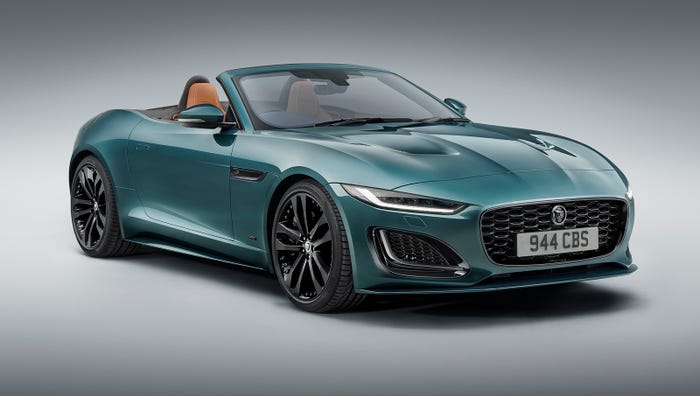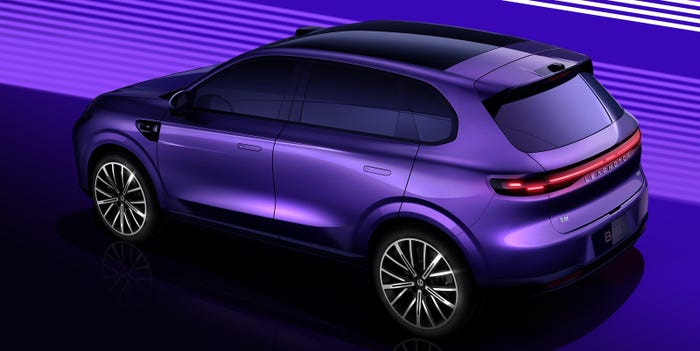’14 Outlander Kicks Off Mitsubishi’s Lineup Overhaul
Trying to get its mojo back after falling into a sales funk, the auto maker has redone the CUV, equipping it with advanced-technology features usually found in more upmarket vehicles.

REDMOND, OR – The ’14 Outlander midsize cross/utility vehicle represents the start of Mitsubishi’s effort to overhaul its lineup in the U.S.
“This is the kickoff to revamp Mitsubishi,” says spokesman Roger Yasukawa.
Trying to get its mojo back after falling into a sales funk, the auto maker has redone the CUV, equipping it with advanced-technology features usually found in more upmarket vehicles and slapping on a sticker that’s less than the outgoing model.
Mitsubishi claims a lot of firsts for the Outlander that goes on sale in June.
“We are the first manufacturer in this segment with forward-collision mitigation, lane-departure warning and adaptive cruise-control options,” says Masatoshi Hasegawa, executive vice president-corporate planning for Mitsubishi North America.
“We also did a lot of work to make this model’s ride, body and chassis the most advanced in the lineup.”
Mitsubishi has been sparse on product since scratching the Galant sedan, Eclipse coupe and Endeavor CUV.
That leaves the Outlander, a smaller Outlander Sport, three versions of the Lancer small car and the i-MIEV electric vehicle. The auto maker unveiled an upcoming subcompact Mirage at the New York auto show in March.
After fellow Japanese auto maker Suzuki announced plans to quit the U.S. market, some industry observers wondered if Mitsubishi would follow because its languid sales and sliver-like market share resembled Suzuki’s.
But Mitsubishi North America is staying put, as evidenced by its determined product development of the Outlander and other impending models, executives say.
“Products are coming down the pipeline, and will do so more frequently in coming years,” Bryan Arnett, MNA’s senior manager-product strategy, says at an Outlander media preview here.
This is the third generation of the vehicle first introduced in 2003. “Mitsubishi is committed to building equity with this nameplate in the U.S.,” Arnett says. “It is a complete redo, inside and out.”
The last Outlander redesign was in 2007. Mitsubishi sold 7,750 units in the U.S. in 2012, off 20.8% from the year before, according to WardsAuto data. The vehicle held a 0.2% market share of the overall CUV segment that totalled 3.4 million units last year.
The new model weighs about 200 lbs. (90.7 kg) less than its predecessor. Shedding pounds came from using high-tensile steel on the platform and reducing the weight of the brakes and suspension.
The result is a nimble CUV that handily negotiates the twisty and hilly roads in the high-desert terrain of central Oregon.
The diet plan also is intended to squeeze out better fuel efficiency. Mitsubishi estimates the front-wheel-drive ES model’s gasoline consumption at 25/31 mpg city/highway (9.4-7.6 L/100 km).
The all-wheel-drive system makes the GT model more surefooted, but its extra weight and torque delivery requires more fuel consumption. That vehicle gets 20/28 mpg (11.8-8.4 L/100 km).
“The Outlander went from a vehicle that was among the heaviest in its class to the lightest,” Arnett says. “It has become the most fuel-efficient 7-passenger (CUV) on the market.” The ES weighs in at 3,274 lbs. (1,485 kg).
Mitsubishi bills the Outlander as one of the most aerodynamically efficient vehicles in its class, with a 7% reduction in drag compared with the previous model.
Gone is the flat, wide-mouth grille. In its place is a “progressive sleek design that improves the aerodynamics,” Arnett says, referring to a front fascia that is more functional, but less bold-looking than the one on the outgoing model.
“A lot of emphasis was put on aerodynamics both to make the car more appealing and also more fuel-efficient.”
Engine choices are a 2.4L inline 4-cyl. and a 3.0L V-6. The lower block mostly is a carryover design, but the upper portion is new.
The 2.4L SOHC engine works with an improved continuously variable transmission and a new version of Mitsubishi’s valve-timing electronic lift system designed to increase power and reduce emissions.
The V-6 is rated at 224 hp at 6,250 rpm with torque at 215 lb.-ft. (291 Nm) at 3,750 rpm. It is mated to a 6-speed automatic transmission with design changes that include a new final drive ratio for improved fuel economy and a revised torque converter for better performance.
Offering a V-6 is another thing intended to set the Outlander apart from the competition that includes the segment-leading Ford Escape, Chevrolet Equinox, Honda CR-V and Toyota RAV4.
“We decided to continue offering the V-6,” Arnett says. “The RAV4 dropped its version. We are the only V-6 in the segment.”
The Mitsubishi Super All-Wheel-Control system is available as a $2,000 option in the mid-grade Outlander SE model and standard on the high-grade GT model.
New standard features include a new driver-activated ECO-mode that reduces fuel consumption by slightly cutting back on engine power during initial acceleration.
When Outlander models equipped with S-AWC are driven with 4-wheel-drive engaged, the driver-activated ECO-mode allows the vehicle to function in 2-wheel-drive unless sensors reactivate S-AWC after detecting poor road or weather conditions.
Mitsubishi says it has outfitted the redone vehicle with interior upgrades such as premium surfaces, high-grade materials, a soft-touch instrument panel and a glossy piano-black center console.
The auto maker sought to keep the interior simple and clean, Arnett says. “We don’t want to put in a fighter-jet cockpit. Everything is ergonomic and intuitive.”
Passenger seating sections have been reworked, with the designers paying particular attention to folding-seat configurations and making second- and third-row access easier. Mitsubishi deserves credit for carving out a third row in a relatively small vehicle. But its cramped rear seating seems intended for children.
Arnett sees the Outlander appealing to price-conscious and safety-conscious families. “We are looking for a lot of Generation Xers with families.”
Outlander prices range from $22,995 for the base model to $33,895 for the GT with S-AWC, V-6 engine and a premium touring package.
Options include heated leather seats, dual climate controls, an electric power tailgate and a hands-free compatible Link system with a USB/iPod port and voice-recognition commands.
Other options include a 710-watt, 9-speaker sound system and a navigation system that features real-time traffic, diamond-lane guidance, weather and 3-D mapping.
All models include active stability control, hill-start assist, antilock brakes and seven airbags.
“It’s an insult to call the Outlander base model a base model,” Arnett says. “We are giving so much value for the money. Even with option packages, for $800 you get thousands of dollars in features.”
As the Outlander starts showing up at Mitsubishi’s 373 dealers, the auto maker will launch a major ad campaign. That is necessary, in part, to get Mitsubishi back on shoppers’ radar screens.
Next year, Mitsubishi plans to introduce a plug-in hybrid-electric vehicle version of the CUV to the U.S. market. Currently available in Japan, it is touted as the world’s first P-HEV with all-wheel drive.
’14 Mitsubishi Outlander
Vehicle type | Front-engine, FWD midsize CUV |
|---|---|
Engine | 2.4L SOHC inline 4-cyl. |
Power (SAE net) | 166 hp @ 6,000 rpm |
Torque | 162 lb.-ft. (220 Nm) @ 4,200 rpm |
Bore x stroke (mm) | 88 X 97 mm |
Compression ratio | 10.5:1 |
Transmission | 6-speed automatic |
Wheelbase | 105.1 ins. (266.9 cm) |
Overall length | 183.3 ins. (465.5 cm) |
Overall width | 70.9 ins. (180 cm) |
Overall height | 66.1 ins. (167.8 cm) |
Curb weight | 3,190 lbs. (1,390 kg) |
Base price | $22,995 |
Fuel economy | 25-31 mpg city/hwy est. (9.4-7.6 L/100 km) |
Competition | Ford Escape, Chevrolet Equinox, Toyota RAV4 |
Pros | Cons |
Less money than predecessor | Tough rivals |
Impressive redo | Struggling brand |
Class-leading features | Penalty-box third row seating |
About the Author
You May Also Like





